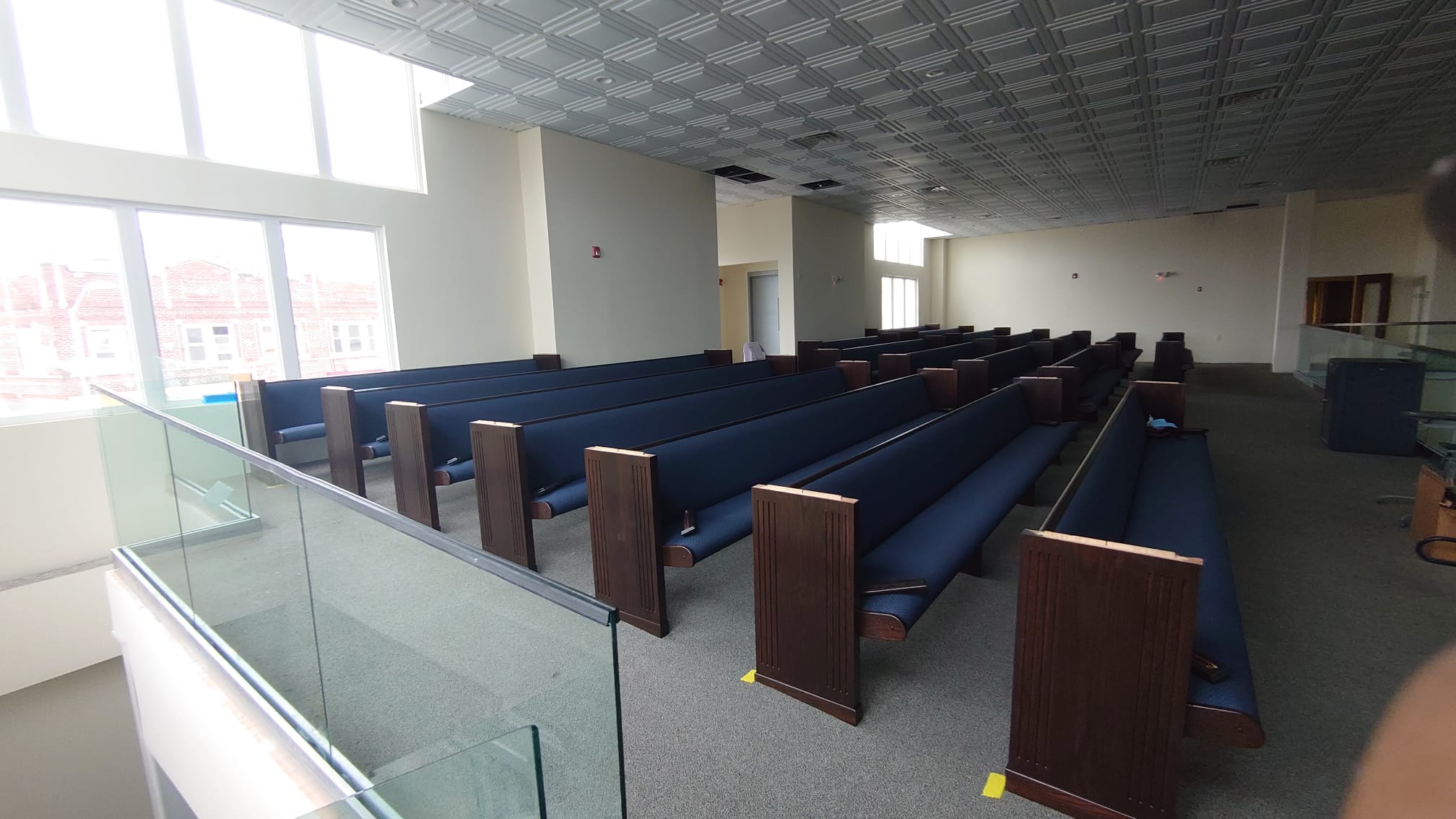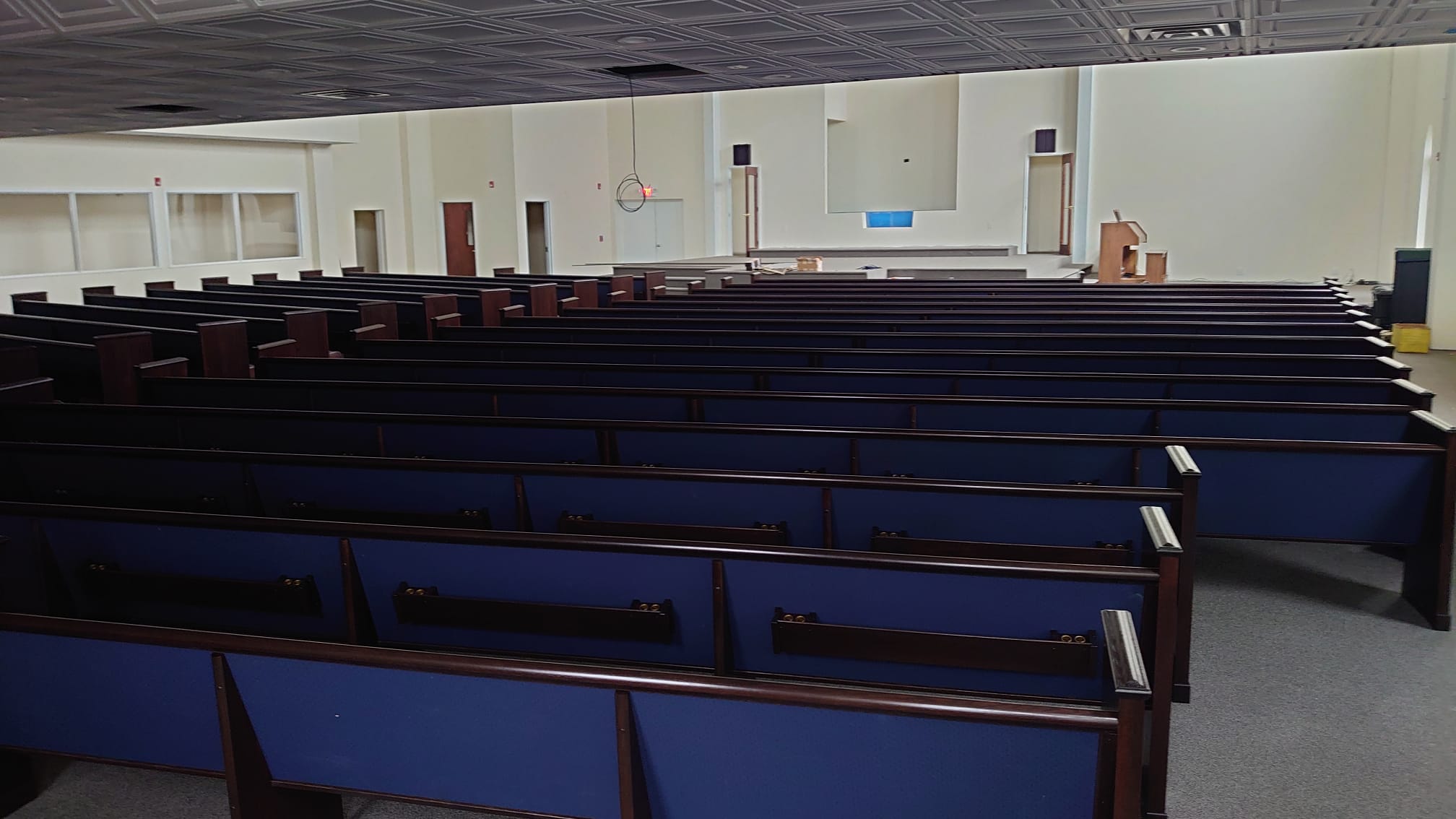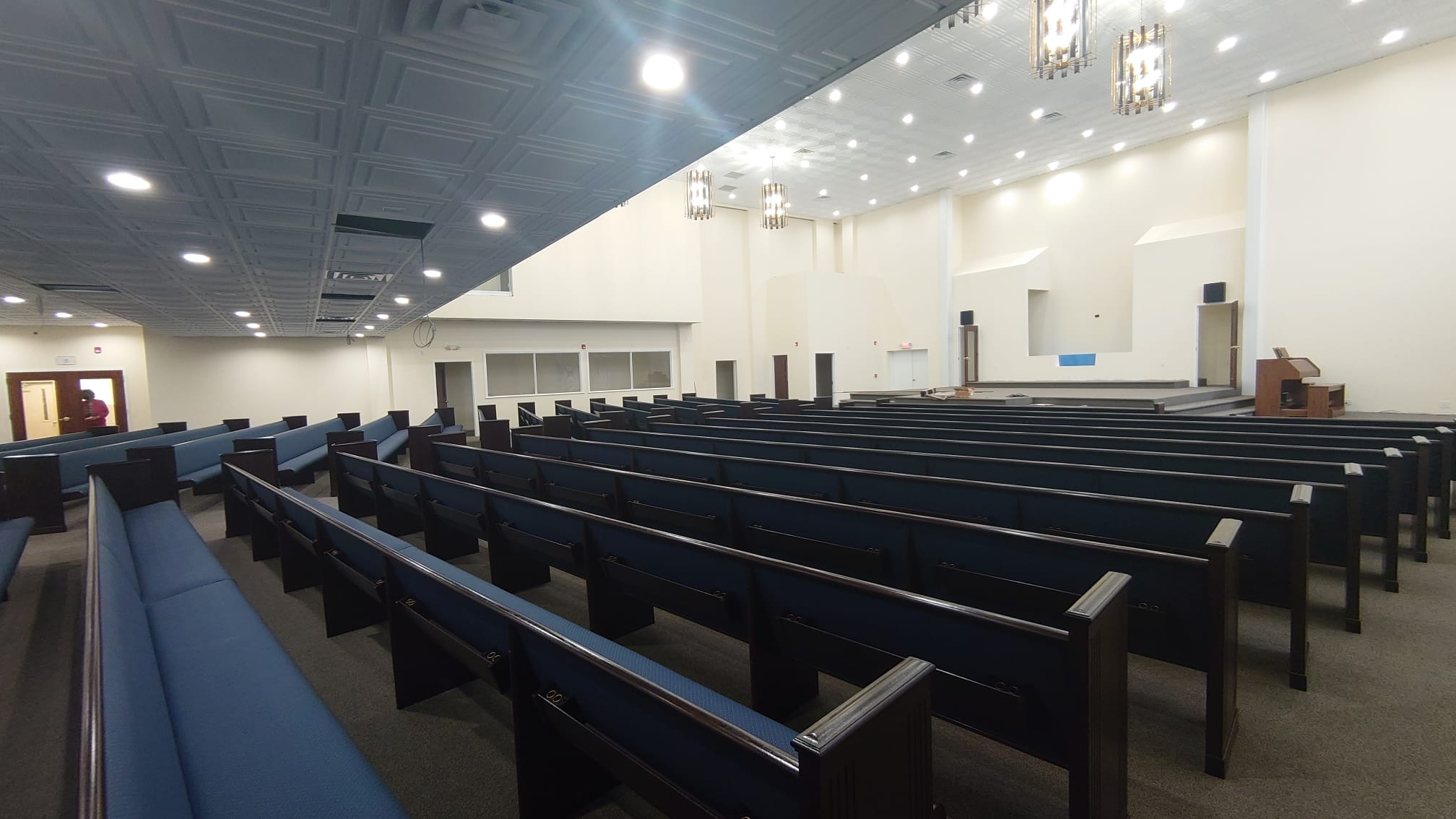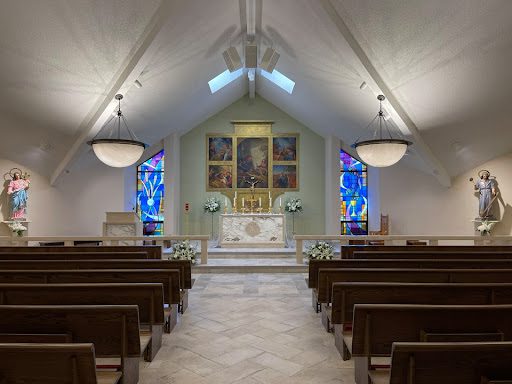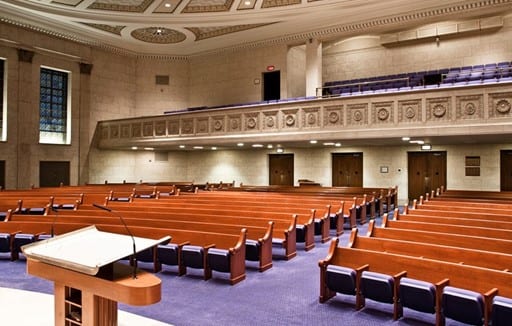
Choosing the perfect church chairs for your worship space is a crucial decision that impacts the comfort and functionality of your congregation. Whether you’re in the middle of a synagogue or church renovation, designing a new worship space, or just wondering how your spiritual center’s seating can best serve your religious services, there are several choices you need to make. You’ll need to determine the maximum number of seats for your worship space, decide between pews, church chairs, or some combination, and select a seating arrangement, among several other steps.
Whether you opt for stacking church chairs for versatility or prioritize church chairs with book racks for added convenience, understanding the needs and preferences of your attendees is paramount. In this comprehensive guide, we will delve into the intricate details of selecting the ideal church seating, offering expert advice and industry-specific insights to assist you in making an informed choice that aligns with your religious services and space requirements.
Luckily, New Holland Church Furniture has design experts to guide you through every step of this process. So, when you’re ready to create a beautiful worship space in your church or synagogue that connects your congregants with their Creator, we can take you from overwhelmed to overjoyed. Find your local rep today to get started.
1. Understand Your Worship Space Needs
Before browsing through different types of church chairs, it’s essential to assess the specific needs of your worship space. Consider the size of your congregation and the physical dimensions of the room. If you have a growing congregation or a multi-purpose space, stacking church chairs might be ideal for their flexibility and ease of storage. For congregations that value traditional aesthetics or have a historical building, pews or fixed seating might be more appropriate.
Additionally, think about how the chairs will be used during services. Giving your congregants a church chair with a book rack could significantly enhance functionality if your services involve reading from hymnals or prayer books. Remember, the goal is to find church seating that fits your space and enhances the worship experience for your attendees.
2. Set a Standard for Your Church Seating
Once you have considered your worship space needs, you need to decide what are your church furniture non-negotiables. Durability is paramount. Seating should withstand frequent use and be easy to maintain. Comfort is another primary consideration, as services can last for an extended period. Look for seating with adequate padding and lumbar support. Aesthetics should not be overlooked either, as the chairs and pews should complement the interior design of your worship space.
Also, consider the chair’s functionality, such as linking chairs together or incorporating accessories like book racks. Accessibility is crucial, too, ensuring all members of your congregation, including those with disabilities, can be accommodated comfortably. Finally, take into account your budget and the long-term value of the chairs seating you select. Balancing cost with quality ensures you invest in seating that has served your church well over the years. Wood church furniture can fulfill all of these standards and is an excellent choice for religious buildings of all types.
3. Determine Your Seating Capacity
The third step in determining the seating needs of your place of worship is to get a rough calculation of your church seating capacity. Follow these steps:
- Find out the maximum occupancy of your building. If you don’t know, check with your local fire department.
- Measure, in feet, the length and width of your worship space where you need seating.
- Determine the area of your worship space by multiplying the length by the width.
- Calculate the rough number of seats required by taking the area of your worship space and dividing it by the following numbers based on your maximum occupancy:
- Up to 300: Divide by 15 to 17 square feet
- 300 to 500: Divide by 12 to 24 square feet
- 500 and above: Divide by 10 square feet
Of course, you’ll have to subtract the space for architectural elements, like columns, posts, stages, and walkways. You’ll also need to remember to factor in aisles for easy access and egress, as well as space between rows for comfort. If your worship services include activities that require additional space, such as kneeling or communion, this will also affect the number of chairs or seating that will fit. Prioritize a layout that ensures every attendee has a good view and can participate fully in the service. This step can be tricky, so it’s best to speak with one of our worship furniture design pros to get an accurate answer.
If your space is irregularly shaped, break it down into smaller, regular shapes, calculate each area, and then add them together for the total area. Don’t forget to include any overflow areas or balconies that might be used for seating. If you are planning to have different zones within the space, such as a dedicated area for families with children, measure these separately. Accurate measurements will ensure you maximize your seating capacity without compromising comfort or safety.
4. Choose Between Church Chairs, Pews, or a Combination
After arriving at an estimated number of seats needed for your church or synagogue, you need to choose whether you want church chairs, pews, or a combination of the two. Each choice has distinct benefits and some downsides, too. You’ll need to decide which works best for your religious services. This blog post gives you detailed information to help you decide. But let’s look at each option a little closer.
The Flexibility of Stacking Chairs
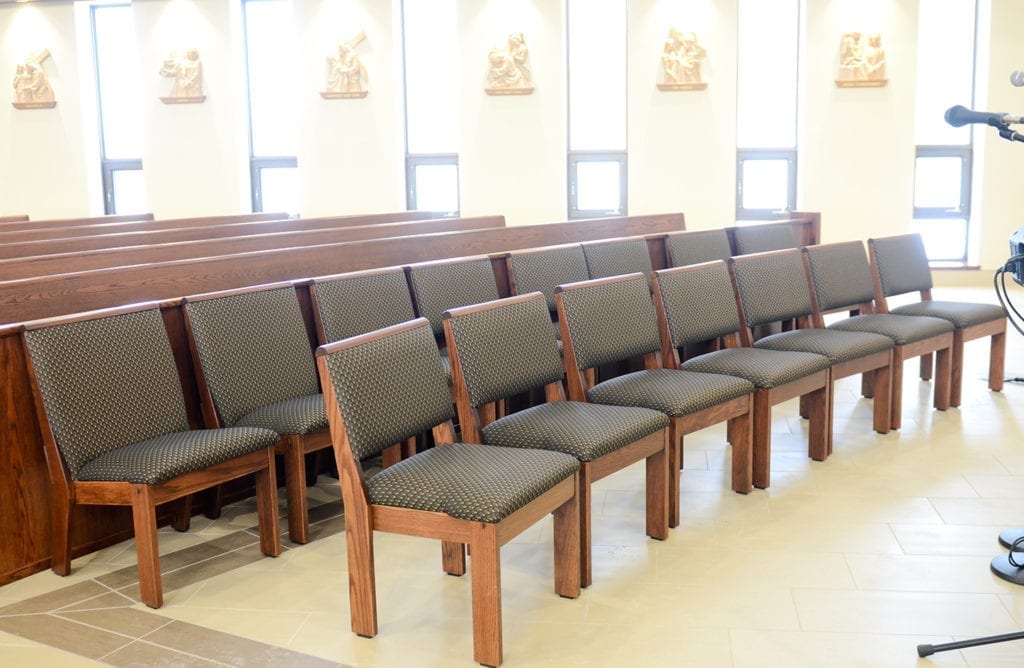
Stacking church chairs offer unparalleled flexibility for worship spaces that host a variety of events. These chairs can be easily rearranged, stacked, and stored away, making them ideal for multi-purpose rooms or for churches that often reconfigure their layout. When not in use, they take up minimal storage space.
This versatility also allows for the accommodation of different group sizes. Whether it’s a small prayer meeting or a large service, the space can be quickly adapted. Additionally, stacking chairs are typically lighter than pews and can be moved by a single person, which is helpful for volunteer-based setups. High-quality church chairs also provide flexibility to experiment with different seating arrangements, but you may need to replace them more often since they’ll be moved, stacked, and stored frequently.
When considering stacking church chairs, look for models with sturdy frames and high-quality materials to ensure longevity despite frequent handling. The ability to customize these chairs with fabric colors and finishes means they can match your church’s aesthetic without sacrificing functionality.
The Tradition of Church Pews
Church pews have been a longstanding tradition in many worship spaces, often favored for their historical significance and solid, fixed nature. Pews are traditional church furniture that allows churchgoers to spread out, and worshippers appreciate their timeless beauty. Since they are fixed in place and moving them is difficult, experimenting with seating arrangements is not an option.
Pews offer a sense of permanence and can visually represent a community’s commitment to their faith and church home. Pews made from wood can be stained to complement the space’s architectural details. They also encourage closeness and a sense of unity among congregants as they sit shoulder to shoulder during services.
However, pews do have limitations in terms of flexibility. Once installed, they are difficult to move or reconfigure. This property makes them less suitable for spaces that are used for a variety of activities beyond worship services. When considering pews, weighing their traditional appeal against the need for versatility and the types of events your worship space will accommodate is important.
The Versatility of Combination Seating
Combination seating is contemporary religious furniture that combines individual seating within fixed rows. You get the convenience of separate seats, but since they’re fixed into place, it isn’t easy to rearrange once they’re installed. Integrating combination seating into your layout lets you maintain a traditional look and feel in your worship space while enjoying modern, theater-style seats. This approach can be convenient in larger worship spaces. Always ensure the design and color of combination seating are harmonious with your existing design for a cohesive look.
However, keep in mind that these seats are fixed into place like pews. And, like pews, they can be made into curved or straight rows. Synagogues, in particular, appreciate this style of seating. The option for self-rising seats also provides excellent accessibility between rows.
5. Choose Your Chair or Pew Style
When selecting the style of your church or synagogue seating, consider both aesthetics and functionality. Chairs come in various designs, from modern to traditional, and a range of upholstery fabrics. Features like padding thickness, backrest shape, and armrests can significantly affect comfort during extended services. You can also choose from optional kneelers, have a chair with a book rack, get custom-routed designs into the chair back, and add interlocking pins.
For pews, the style often reflects architectural cues from the worship space. Simple, straight-lined pews might suit a contemporary church, while ornate, carved pews complement historical buildings. It’s also essential to consider how the style will impact the overall atmosphere of the sanctuary. Your pew end design can be more open, closed, or a mix of the two with plain or routed end designs. You’ll also choose the pew body shape—from wood on both the seat and back to adding an upholstered seat or having both the seat & back upholstered. You’ll also need to decide on whether you want an open back or closed back on your pews.
Chairs and pews can be customized with details like embroidery, routed details, or personalized plaques designed to reflect your congregation’s identity. Choosing a style that resonates with your community will help create a welcoming and comfortable space for worship and reflection.
6. Pick Your Wood and Wood Finish
Selecting suitable wood and finish for your church furniture is vital to creating a harmonious and inviting worship space. Wood is a popular choice for its durability and timeless appeal. When picking the type of wood, consider oak for its strength and traditional look, maple for a lighter feel, or cherry for its rich, warm tones. Other wood options include:
- Red Oak
- Maple
- Cherry
- Sapele Mahogany
- European Beech
- White Oak
The finish you choose will protect the wood and enhance its natural beauty. Options range from light stains highlighting the wood’s grain to darker stains for a dramatic effect. High-gloss finishes can add a sense of grandeur, while matte finishes provide a more subtle and contemporary feel. Always remember that the wood and finish should complement your worship space’s interior and reflect your congregation’s values and traditions. Durability is also a practical consideration, as the finish must stand up to regular use and cleaning. Some of your finish color options include:
- American Walnut
- Cinnamon
- Cordovan
- Burnt Sugar
- White Birch
- And Many More
7. Select Your Fabric, if Applicable
For church seating that requires upholstery, selecting a suitable fabric is vital for both aesthetics and longevity. Fabrics come in various colors, patterns, and textures, allowing you to align the seating with your church’s interior design and color scheme. When making your choice, consider the fabric’s durability, as it will need to endure regular use and cleaning without fading or tearing.
Fabrics with a higher double rub count indicating abrasion resistance are more suited for high-traffic areas. Additionally, look for stain-resistant materials with flame-retardant properties for safety. Comfort is another crucial factor. Breathable fabrics can provide more comfort for your congregation during extended services. Finally, please consider the fabric’s maintenance requirements to ensure it fits within your congregation’s capacity to upkeep the chairs over time.
8. Decide How You Want Your Seating Arranged
Once you have the estimated number, type, and design of your church or synagogue seating, you’ll need to decide how you wish to arrange your seats. With curved church pews, straight or angled rows of chairs, or even a complete circle seating method, there are plenty of choices when it comes to seating arrangements at your place of worship.
The Appeal of Curved Church Pews
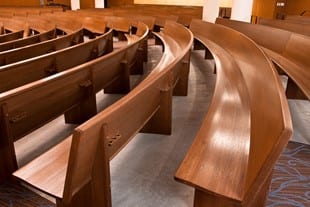
Curved church pews offer a unique aesthetic and functional appeal in your seating arrangement. Their shape enhances the sense of community by allowing congregants to slightly face one another, fostering a more intimate worship experience. From a design perspective, curves can soften the overall look of the space and add an architectural interest that straight pews or chairs do not provide.
In addition, our specialty at New Holland Church Furniture is radius curved pews. We have been the ONLY manufacturer of these church pews since 1962 and have installed them throughout the United States, Canada, the Caribbean, and South America. Curved benches create a more intimate experience with a great view of critical focal points. Increased seating capacity, without the need to expand your space, is a possibility with curved seating.
The Simplicity of Straight Rows
Straight rows of church chairs or pews are a classic and efficient choice for many worship spaces. Straight rows of pews or chairs directly face a stage, altar, or pulpit in the front of the room. It helps create multiple aisles and is an excellent choice for long, rectangular sanctuaries. However, it makes interacting between congregants difficult since they aren’t facing each other. When configuring consecutive rows, it’s essential to ensure ample space for people to move in and out comfortably and that aisles are wide enough to meet safety standards.
The Communal Feel of Angled Rows
Angled rows can create a communal atmosphere within the worship space, drawing congregants together and fostering a sense of unity during services. Angled rows fan out from the center and direct attention to the altar or pulpit. It works well with the acoustics of a building but may not be ideal for narrow spaces. When planning angled rows, it’s essential to consider the angles carefully to maintain ease of movement and ensure that each seat remains a comfortable and engaging space.
The Closeness of Fan Rows
Fan rows work best in square-shaped rooms and maximize closeness, allowing visitors in the back row to see and hear what’s happening in the front of the room. However, you may need larger aisle widths to accommodate this design. This design creates a warm, inclusive environment that enhances the feeling of community among congregants. All attendees are given a clear view by positioning the seats in a semi-circle or fan shape around the pulpit or altar. This layout is particularly effective for worship services where the speaker and the audience need to feel more connected and engaged.
The Interaction of a Complete Circle
A contemporary way to arrange your church or synagogue seating is in a complete circle around a center stage. This design encourages lots of interaction between the speaker and the guests, but it’s not ideal if you have a band that leads worship music. This arrangement gives everyone equal proximity to the pulpit or altar. It allows all congregation members to see each other, fostering a significant feeling of community and camaraderie. It promotes an egalitarian and democratic ethos within the congregation, as everyone is given equal importance. However, it might require a sophisticated audio-visual system to ensure the speaker is well-seen and heard by everyone.
For more information on how design choices affect your congregation, check out these tips on maximizing your worship space to grow your congregation.
9. Enhance Your Worship Space with Additional Church Furniture
Having decided on the seating arrangement that best suits your worship needs, it’s essential to consider additional church furniture to enhance your worship space further. These might include items like book racks on chairs, clergy chairs, or other liturgical furniture. Here, we’ll look at some considerations for these added features.
The Importance of a Church Chair with Book Rack
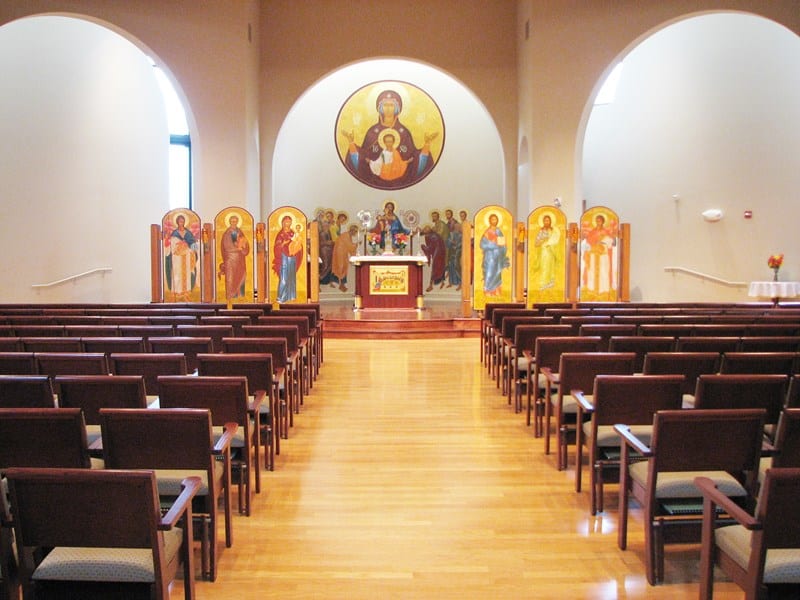
Incorporating a church chair with a book rack can significantly enhance the functionality of your worship space. These chairs provide a convenient place for hymnals, Bibles, and other service materials, keeping them within easy reach for congregants. This feature is significant in services that involve frequent reading or singing, as it allows attendees to participate more fully and comfortably.
The Role of Clergy Chairs
Clergy chairs are an essential element in the design of your worship space, serving not just a functional role but also as a symbol of leadership within the church. These chairs are often distinct from the congregation’s seating, with a more prominent design that can include ornate woodwork, richer upholstery, and a higher backrest, signifying the clergy’s guiding role in services.
The Significance of Baptismal Fonts
Baptismal fonts play a profound role in the spiritual life of a church, acting as the centerpiece for the sacrament of baptism. The design of baptismal fonts often reflects the theological significance of the ritual, with attention to material, shape, and size. When choosing a baptismal font, consider its placement within the worship space to ensure it is accessible and visible to the congregation. Materials like stone, wood, or metal can be selected to match the church’s aesthetic and to convey a sense of permanence and sanctity.
Improve the Worship Experience at Your Church or Synagogue Today
Choosing the right church furniture partner is the final step in enhancing your worship space with new seating. Look for a provider with a solid history of quality products and positive customer testimonials. A reliable partner will offer a range of options and be able to provide expert advice tailored to your specific needs and constraints. At New Holland Church Furniture, you can get all of these features and so much more.
Whether you need help determining the seating needs at your place of worship or creating a particular atmosphere, we have the knowledge and passion required to do so. The design reps at New Holland Church Furniture are experienced in every step of the synagogue and church chairs, pews, and combination seating process. We can help you evaluate your space and determine the best seating capacity, type of seats, and the arrangement of the seats for you. Find a rep to get started on the process of creating a beautiful worship space with appropriate seating for your spiritual center. You’re only regret will be that you didn’t start this process sooner with our team!
Resources:

